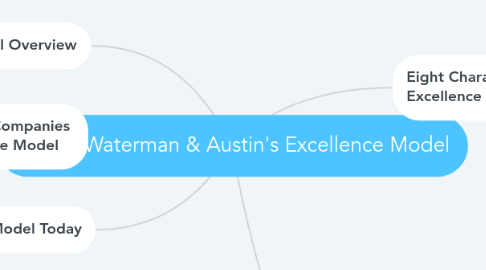
1. Conceptual Overview
1.1. Definition of Excellence
1.1.1. Excellence as Persistence
1.1.1.1. Persistence as a Key Ingredient to Success
1.1.2. Excellence as the Pursuit of Quality
1.1.2.1. Quality Management & Continuous Improvement
2. Examples of Companies Embodying the Model
2.1. Firms Successfully Applying the Excellence Model
2.2. Analysis of their Achievements & Challenges
3. Importance of the Model Today
3.1. Current Relevance & Application
3.2. Redesigning the Model for the Future: Suggested Improvements
4. Eight Characteristics of Excellence
4.1. Bias for Action
4.1.1. Quick Decision Making in Corporate Culture
4.1.2. Importance of Responsiveness & Agility
4.2. Close to the Customer
4.2.1. Understanding Customer Needs & Preferences
4.2.1.1. Creating Customer-centered Products & Services
4.2.2. Building Customer Relationships
4.2.2.1. Importance of Customer Loyalty & Retention
4.3. Autonomy and Entrepreneurship
4.3.1. Encourage Innovation & Creativity
4.3.2. Promoting Risk-Taking & Experiments
4.4. Productivity Through People
4.4.1. Employee Engagement & Satisfaction Impacting Productivity
4.4.2. Promoting Teamwork & Collaboration
4.5. Hands-on, Value-Driven
4.5.1. Management Walking the Talk
4.5.2. Aligning Actions with Company Values & Principles
4.6. Stick to the Knitting
4.6.1. Staying Focused on Core Competencies
4.6.2. Avoiding Over-Diversification of Business Operations
4.7. Simple Form, Lean Staff
4.7.1. Minimalistic Organizational Structure
4.7.2. Reducing Bureaucracy for Efficient Operations
4.8. Simultaneous Loose-Tight Properties
4.8.1. Balancing Flexibility & Control
4.8.2. Importance of Adherence to Principles & Room for Innovation
